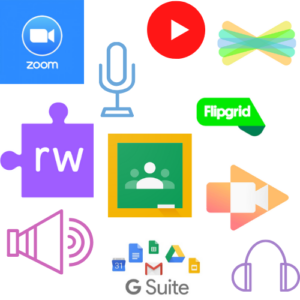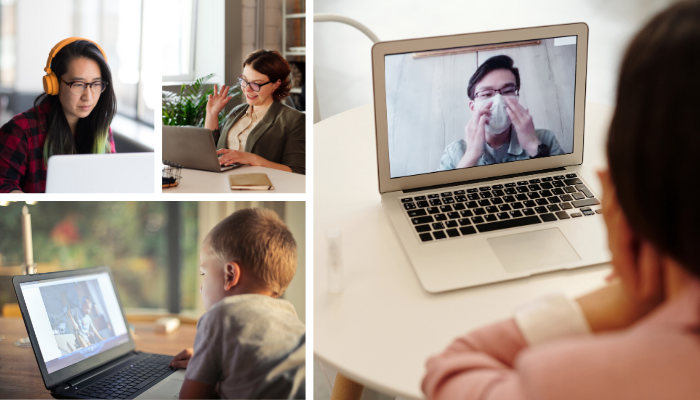Over the past few months, we have all encountered a shakeup that has caused us to change the way we engage with our students, peers, loved ones, and humans in general. We have entered what some call Emergency Online Learning, a temporary representation that many of us educators have found ourselves propelled into with very little time or preparation. With that challenge comes the desire to continue to provide predictable, meaningful, and accessible opportunities for learning. As teachers navigate through this journey, a foundation in Universal Design for Learning (UDL) plays a pivotal role in equipping us with the strategies and ingenuity to help us thrive in these unprecedented times.
During the 2020 COVID-19 school closure, teachers have quickly entered a new and unfamiliar space. As teachers continue to immerse themselves in this unconventional way of delivering, engaging, and assessing students, the foundation of UDL is an anchor in the design of instruction. Whether one is new(er) to UDL or has been living and breathing its practices for years, we all are working under the same goal of creating opportunities for all learners to succeed. Even in a time of Emergency Online Learning, the founding principles of UDL (Multiple Means of Engagement, Representation, and Action and Expression) provide solutions that are critical in an online environment.
Engagement
Fostering collaboration and community is an important UDL checkpoint. Prior to the COVID-19 school closure, many teachers were already amazing collaborators but now more than ever, teachers are co-planning, co-serving, collaborating, sharing resources, and problem-solving in innovative ways in order to best engage learners across their districts. Collective Teacher Efficacy, and the notion that “we are better together” is at an all-time high. Teachers are recognizing one another’s strengths and capitalizing on them. Teachers are embracing the idea of trying something new with a growth mindset and a “fail forward” attitude. Our learners are reaching out to one another to help navigate new platforms and offer feedback and assistance. Platforms like Google Classroom and G-suite tools, Seesaw (blog), and Flipgrid lend themselves to online collaboration and discussion. Opportunities for family engagement and school collaboration are occurring like never before. As educators, we are better understanding our learners’ world outside of school and families are better understanding the educators’ world inside of school.
With the uncertainty that accompanies this “new normal”, we recognize the need to support social and emotional needs, learning, and connectedness during this time. As human beings we are social beings, and created for community and interaction. Teachers are orchestrating ways for learners to stay connected to their learning communities virtually through Google Meets, online discussions, and online games like Kahoot.
Giving and receiving feedback during this time is essential. Honoring the Expert Learner and what they deem as important to their success cannot be overlooked. Asking learners what is working/not working for them helps us to better plan for their needs. Receiving learner feedback and changing instructional practices because of it, is transformative.
Honoring our students’ funds of knowledge (who our students are and what experiences they bring to the learning) aides in engaging learners. The variability that exists within our learners is vast. Now, as we virtually, have one foot inside the homes and environments of our students, we realize just how critical it is to honor each student’s funds of knowledge and be culturally responsive in our teaching. When educators help connect students’ experiences to old and new learning, we are also supporting cognitive processes in Executive Functioning, like working memory.
Multiple Means of Representation

The number of representations educators are using now to convey content is incredible. Realizing the difficulty in maintaining engagement on an online platform, educators are using a variety of methods to present information to learners. For example, the use of Multimedia (Video, audio, e-books, etc.) is commonly present. Platforms like Seesaw, Flipgrid, Google Classroom, G-Suite Tools, Screencastify, Google Meet, and Zoom) all enhance both representation and also Action/Expression. Many of these options provide ways to customize information, provide auditory, visual, and written representations. Features within Read and Write for Google, which is accessible to all learners, provide options for language and symbols, vocabulary, and comprehension. As in a conventional classroom, educators must evaluate the learning goal and decide what is the best representation option.
Action and Expression
Supporting executive functions in our conventional classrooms is important; the same holds true for online experiences. Our learners benefit from the structured and predictable flow of instruction and routines. In the physical classroom, learners get accustomed to the expectations and routines. Learners thrive on that same consistency in the online environment. For example, using a Google slideshow template becomes a familiar structure that learners go to that is predictable and easy to access. Predictable schedules, calendars, project checklists, and to-do lists (like in Google Classroom) help to support the cognitive/emotional load our students are carrying.
Additionally, we are assessing students by providing them with numerous options and choices. We recognize that all tools and scaffolds are at their fingertips so we are in a much better place to provide multiple pathways for students to share how they are working toward meaningful goals. Tools like Edupuzzle, Peardeck, Seesaw, Canva, Edublogs, and the Google suite allow learners to become creators who can express knowledge and skills in ways that are accessible and engaging. And for students who may lack access to such tools, options like phone calls, mail, and drive-by pickups from teachers are amazing options that highlight the passion and power of educators.
A Final Thought
“This too shall pass”, and looking forward to the future, we must not forget all we are discovering about our learners and ourselves. One of the benefits of exploring new uncharted waters is that educators don’t feel bound to “do what they’ve always done”. Learners will come out of this situation knowing themselves better as learners and human beings. Another positive note is that educators will have more strategies and varied representations in their toolbox to meet the needs of varied learners. Many learners are discovering new and surprising methods that speak to how they might learn best. Educators are more open and flexible in letting learners show what they know in multiple ways, beyond pencil and paper.
As we move forward in the days ahead, may we remember all we have learned in the past and embrace what we are learning in the present. What we are experiencing right now has the opportunity to better us as a district and learning community in the future. May we reflect, improve, and continue to be an unrivaled community of learners and leaders, honoring the past, and shaping the future.
Kim Schiefelbein is the UDL Coach/Facilitator for the Oconomowoc Area School District. Kim has been in the field of Education for 19 years with the last 7 years focusing on Coaching Teams and developing professional development to build capacity in UDL implementation at the district level. Kimberly is also a proud wife and mother of two amazing sons.
Resources: CAST (2018). Universal Design for Learning Guidelines version 2.2. Retrieved from http://udlguidelines.cast.org



